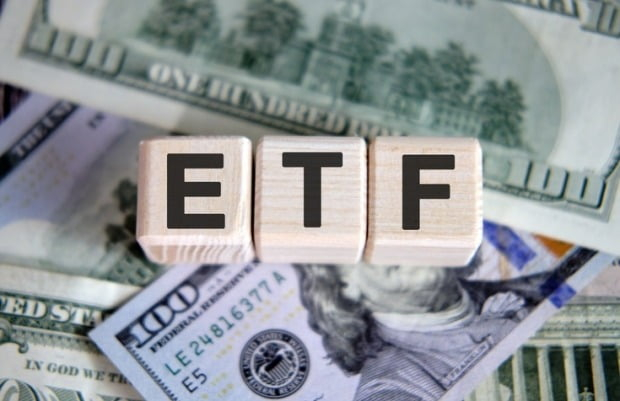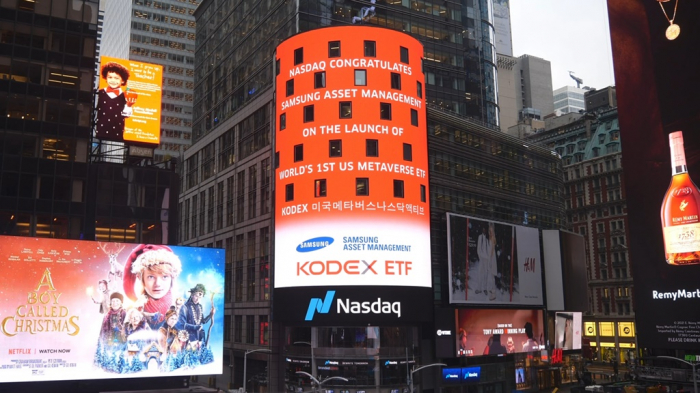Korean stock market
ETFs entice Korean investors amid volatile market
Koreans buy more ETFs than individual stocks in the last six months; net asset value growth No. 1 globally in 2021
By Mar 21, 2022 (Gmt+09:00)
3
Min read
Most Read
LG Chem to sell water filter business to Glenwood PE for $692 million


Kyobo Life poised to buy Japan’s SBI Group-owned savings bank


KT&G eyes overseas M&A after rejecting activist fund's offer


StockX in merger talks with Naver’s online reseller Kream


Mirae Asset to be named Korea Post’s core real estate fund operator



South Korean retail investors bought more exchange-traded funds (ETFs) than stocks on the country’s main Kospi in the last six months as the baskets of securities are seen as safer than individual shares amid growing market volatility.
Retail investors purchased a combined net 6.9 trillion won ($5.7 billion) worth of ETFs in the six months to March 18, far more than the net 6 trillion won purchase of stocks, Korea Exchange data showed. It was the first time for the net purchase of ETFs to surpass demand for individual shares on the Kospi since 2002 when the country introduced the pooled investment securities.
The net asset value of ETFs in the country totaled 71.3 trillion won last year, about 200 times the 344.4 billion won in 2002. Currently, 547 ETFs are listed with more than 200 names emerging in the last five years, compared to only four 20 years ago.
WORLD’S NO. 1 GROWTH
South Korean ETFs’ net asset value grew 42.1% in 2021, exceeding the world’s average increase of 29.5%, according to research firm ETFGI. The growth was higher than 35.1% in Canada, the birthplace of ETFs, 33.1% in the US, the world’s largest ETF market, and 28.3% in Asia-Pacific excluding Japan.
“The net asset value is likely to exceed 100 trillion won as early as next year given current growth as ETFs are in the spotlight of the newly expanding pension fund markets,” said Kim Jung-hyun, office head of ETF investment division at Shinhan Asset Management Co., referring to the size of South Korea’s ETFs.
ETFs have been growing more popular for their safety and convenience as they are tradable anytime and diversify investment.
ETFs with various themes have appeared in the markets of late, rendering everything in daily life an investment target.
CRISIS LURES INVESTORS TO ETFS
ETFs were introduced in South Korea in 2002 with four names listed such as Samsung Asset Management Co.’s Kodex200 and others tracking the Kospi 200 and the Kospi 50. They were not immediately popular because of their unfamiliar concept, as well as weak interest in passive investments and index funds. The Kodex attracted only 1.1 billion won from retail investors when listed, slightly higher than the 1 billion won requirement for diversified investment.
But investors paid attention to ETFs from 2008 when the global financial crisis hit markets around the world, causing massive losses from public offering funds. ETFs attracted investors with easy subscription and cancellation, as well as low management fees. In 2009-2010, inverse ETFs and leveraged ETFs were launched in Asia, hogging the limelight.
“A downgrade to US credit ratings in 2011 and the European financial crisis raised volatility in markets, boosting the popularity of inverse and leveraged ETFs,” said Kim Nam-ki, executive director of Mirae Asset Global Investments’ ETF management business unit. In August 2011, Standard & Poor’s made its first-ever cut in US sovereign debt, lowering the long-term rating one notch to AA-plus with a negative outlook.
The net asset value of South Korea’s ETFs exceeded the 10 trillion won mark in 2012 and has been steadily growing to 30 trillion won in 2017 and 50 trillion won in 2019.
PARADIGM SHIFT
The market was boosted by COVID-19, which has been driving investors to ETFs with the net asset value increasing more than 20 trillion won in 2021 when the number of listed ETFs topped 500.
“A paradigm shift in the investment's popularization contributed to the rapid growth of the ETF market,” Shinhan’s Kim said.
In addition, new types of ETFs such as Smart-Beta ETFs and Total Return ETFs emerged, helping ETFs become an alternative investment. Retail investors also hailed ETFs with various themes such as secondary batteries and metaverse as they wanted more than market average profits. The ETF market grew further thanks to Active ETFs.

South Korea’s ETF market is expected to rapidly expand, experts said.
“ETFs are still the industry’s future bread and butter, given their convenience and diversified investment effect,” said Korea Investment Management CEO Bae Jae-kyu, who is well known for introducing the country’s first ETF. “The use of ETFs will take off as the pension market is growing fast.”
Write to Jae-Won Park, Hyeong-Gyo Seo and Eun-Seo Koo at wonderful@hankyung.com
Jongwoo Cheon edited this article.
More to Read
Comment 0
LOG IN




